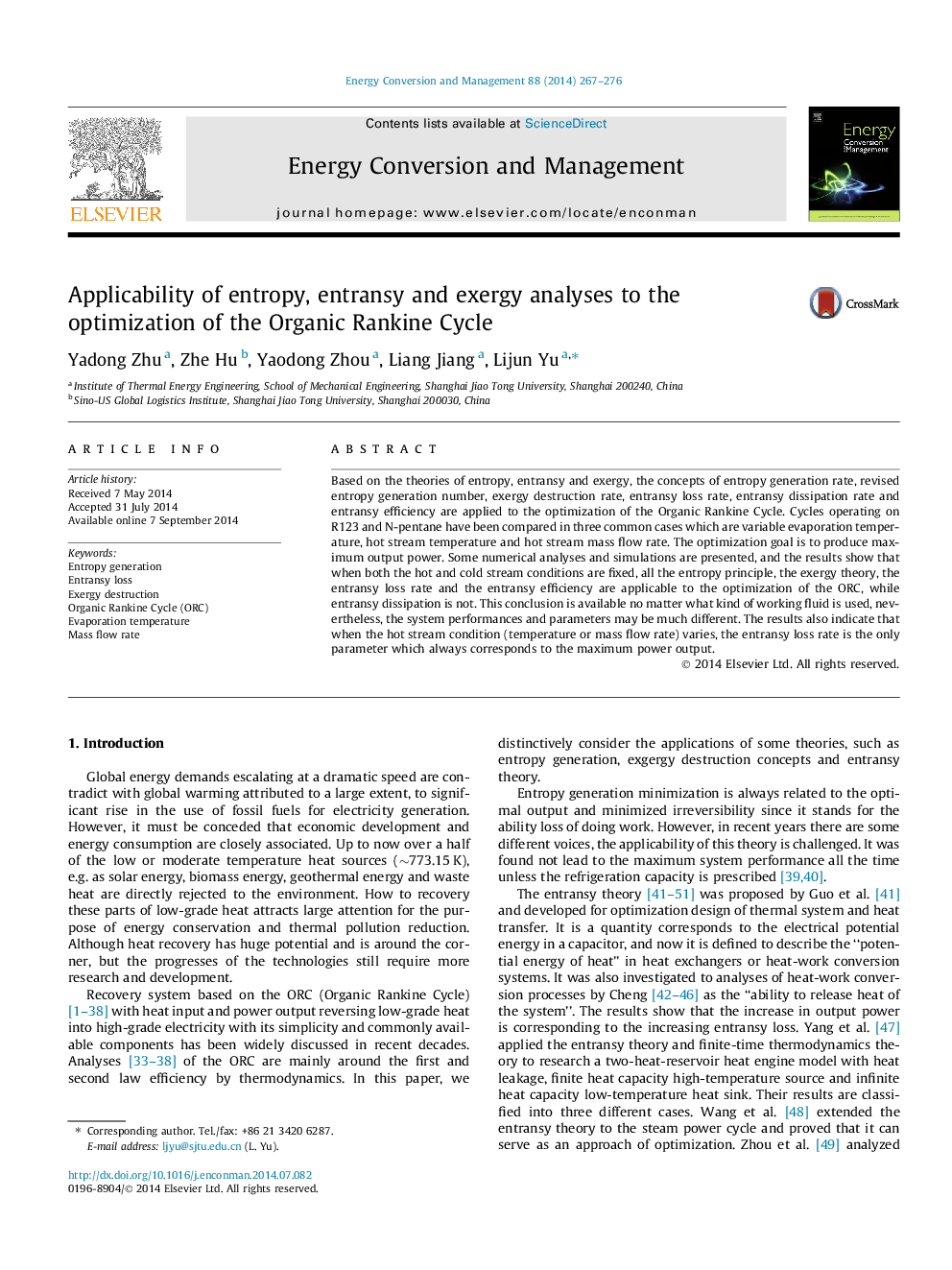| کد مقاله | کد نشریه | سال انتشار | مقاله انگلیسی | نسخه تمام متن |
|---|---|---|---|---|
| 765684 | 1462874 | 2014 | 10 صفحه PDF | دانلود رایگان |
• Theories of entropy, exergy and entransy are applied to the optimization of the ORC.
• Two commonly utilized working fluids – R123 and N-pentane are chosen for comparison.
• Variable evaporation temperature, hot stream temperature and mass flow rate are considered.
• 3-D coordinates are utilized to observe the global variation of parameters.
• The concept of entransy loss rate is appropriate for all the cases discussed in this paper.
Based on the theories of entropy, entransy and exergy, the concepts of entropy generation rate, revised entropy generation number, exergy destruction rate, entransy loss rate, entransy dissipation rate and entransy efficiency are applied to the optimization of the Organic Rankine Cycle. Cycles operating on R123 and N-pentane have been compared in three common cases which are variable evaporation temperature, hot stream temperature and hot stream mass flow rate. The optimization goal is to produce maximum output power. Some numerical analyses and simulations are presented, and the results show that when both the hot and cold stream conditions are fixed, all the entropy principle, the exergy theory, the entransy loss rate and the entransy efficiency are applicable to the optimization of the ORC, while entransy dissipation is not. This conclusion is available no matter what kind of working fluid is used, nevertheless, the system performances and parameters may be much different. The results also indicate that when the hot stream condition (temperature or mass flow rate) varies, the entransy loss rate is the only parameter which always corresponds to the maximum power output.
Fig. 3a. Variations of the evaluation parameters with evaporation temperature in the case of prescribed hot and cold streams for R123. Fig. 3(a) indicates that among the seven parameters, the minimum entropy generation rate, exergy destruction rate, entransy efficiency, revised entropy generation number and the maximum entransy loss rate are corresponding to the maximum output power. However, the minimum entransy dissipation rate does not associate with the output power variation, it can be explained as follow: the entransy dissipation is one part of the entransy loss rate besides entransy variation (work entransy) or does not consider the influence of work output on the change of entransy.Figure optionsDownload as PowerPoint slide
Journal: Energy Conversion and Management - Volume 88, December 2014, Pages 267–276
